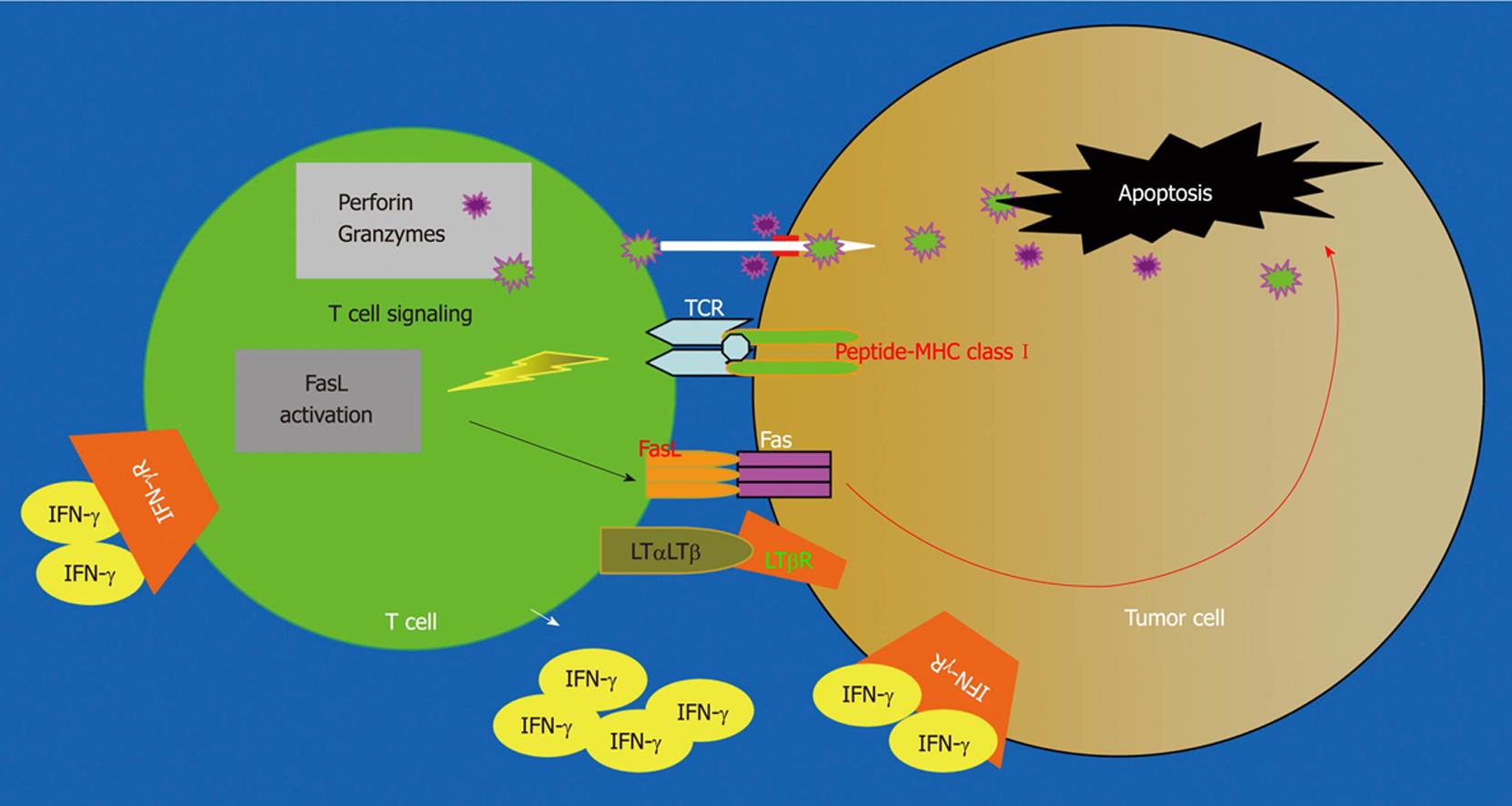Copyright
©2010 Baishideng Publishing Group Co.
World J Gastrointest Oncol. Nov 15, 2010; 2(11): 399-406
Published online Nov 15, 2010. doi: 10.4251/wjgo.v2.i11.399
Published online Nov 15, 2010. doi: 10.4251/wjgo.v2.i11.399
Figure 1 Anti-tumor cytotoxicity pathways.
Tumor-specific cytotoxic T lymphocytes (CTLs) recognize tumor cells through TCR and Ag-bound MHC class I. Interactions between the CTL and the tumor cell involve direct cell-cell physical contact and release of modulator molecules (i.e. IFN-γ and other molecules). CTLs primarily use the perforin exocytosis pathway and the Fas-mediated apoptosis pathways to destruct the tumor cells. However, other effector mechanisms, such as the LTβR-mediated apoptosis pathway, also play a role in tumor cell destruction.
- Citation: Liu K. Role of apoptosis resistance in immune evasion and metastasis of colorectal cancer. World J Gastrointest Oncol 2010; 2(11): 399-406
- URL: https://www.wjgnet.com/1948-5204/full/v2/i11/399.htm
- DOI: https://dx.doi.org/10.4251/wjgo.v2.i11.399









